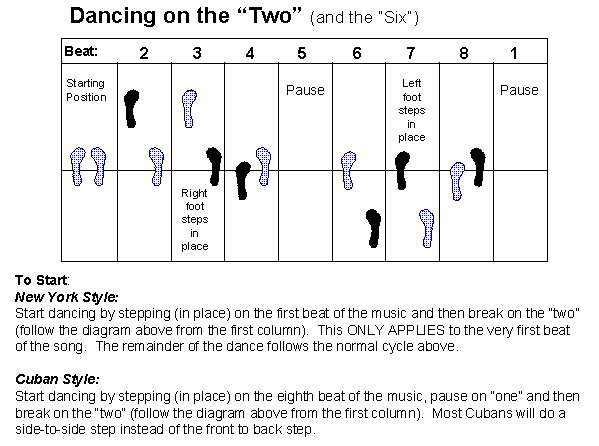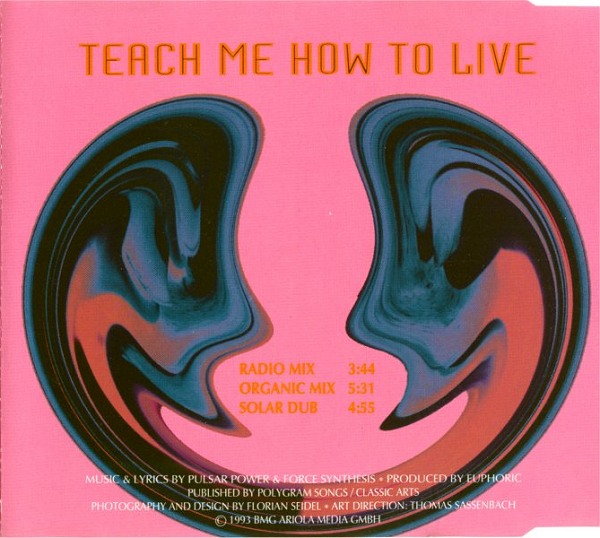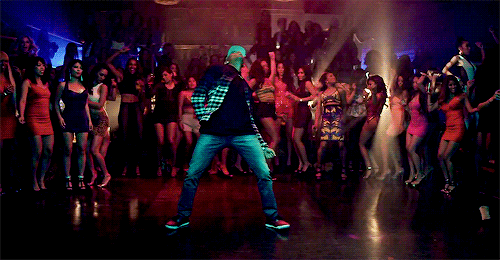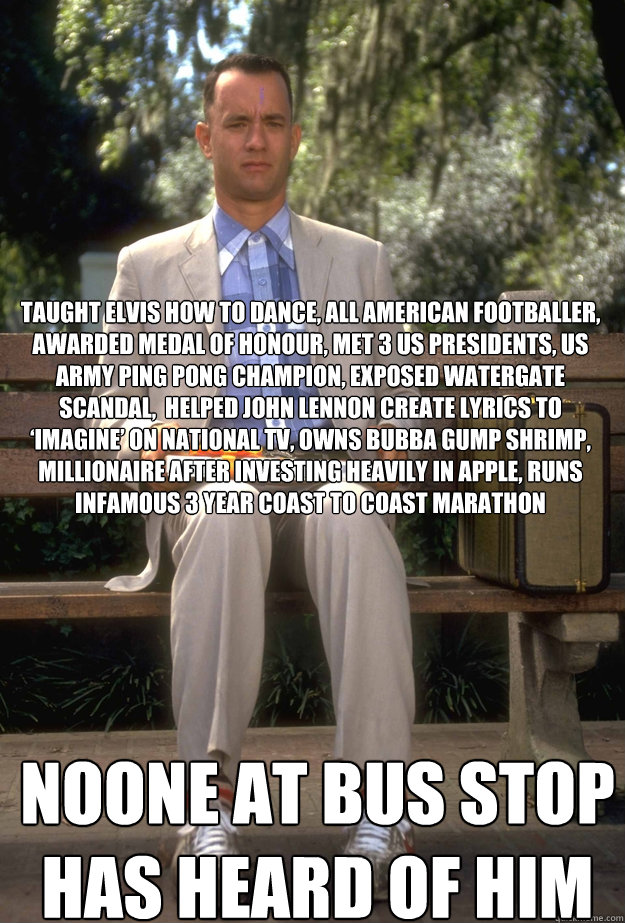How to learn normal dance
How to Dance At A Basic "Good Enough" Level
- Chris MacLeod, MSW
It's hard to avoid dancing entirely in social situations, especially when you're younger. Arguably, everyone should at least become passable at it. It's not as hard to pick up the basics as you may think, and it's smoother sailing once you can join some friends who want to dance and hold your own.
You don't have to reach a particularly high standard
You just need to be good enough that you can get on the dance floor, blend in with everyone else, not look like an idiot, and not feel overly uncomfortable while you're there. (Lots of people are at least somewhat awkward about dancing. That's why they have to down a few drinks and wait for the dance floor to get busy before they step out on it.)
You don't have to look like someone out of a music video. You've just got to be decent enough to get by. Being better than the minimum never hurts of course, but just knowing the basics will put you way ahead of all the non-dancers out there.
If you're straight, try not to worry too much about what the opposite sex thinks. They don't have ultra-picky standards
Straight people don't purely dance to impress the opposite sex, but it is often something they think about.
For guys
Generalization time. Women and men have different ideas of what a good dancer is. Guys often see dancing as a skill to show off. Being better than other dudes on the dance floor is important to them. Their typical image of a "good dancer" is a gymnastic break dancer doing a bunch of flips, or a guy doing a fancy, fluid Popping & Locking routine. A woman's concept of a good dancer is a closer to a passably moving guy who looks comfortable, confident, and like he's having fun.
When a woman wants to dance with you, all she really wants is that...
- You are there with her
- You are dancing with her
- You are not dancing horribly
- You are not being too forward and creepy
For women
This totally sounds like a simplistic stereotype, but most of the time when you're dancing with a guy he's not making a detailed critique of your style.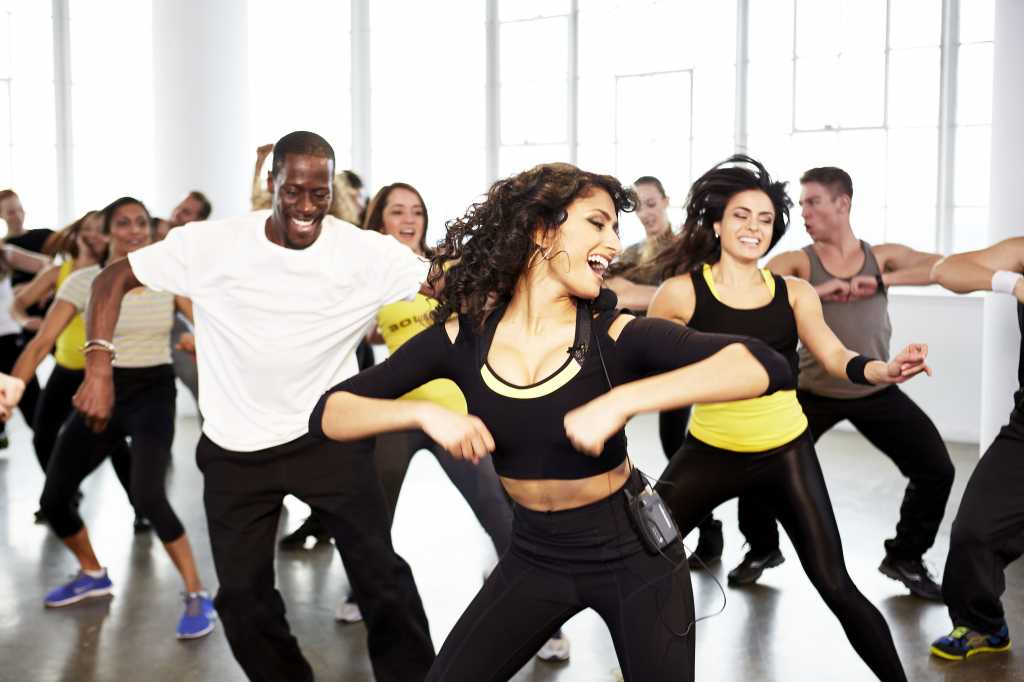 He's probably just thinking, "Yay! I'm dancing with a woman!" Or if he's watching you dance from farther away, he's likely thinking, "She seems like someone I might want to talk to. I wonder if she'd shoot me down though..." Even if he seems like the most genuinely suave, confident guy ever, he's probably still thinking like that on some level. He's probably fifty times more worried about how his dancing looks to you than the other way around. Even he's an amazing dancer and you're not, he likely isn't holding it against you.
He's probably just thinking, "Yay! I'm dancing with a woman!" Or if he's watching you dance from farther away, he's likely thinking, "She seems like someone I might want to talk to. I wonder if she'd shoot me down though..." Even if he seems like the most genuinely suave, confident guy ever, he's probably still thinking like that on some level. He's probably fifty times more worried about how his dancing looks to you than the other way around. Even he's an amazing dancer and you're not, he likely isn't holding it against you.
(That was from my observations as a straight guy. I'm not gay so I won't try to write from their perspective, but I can't imagine their standards for dance partners are radically different.)
Try not to worry too much about what strangers think
Easier said than done, but don't use up too much mental energy fretting about how random bystanders are judging you. Occasionally people will snicker and point to people who are dancing because they're really just too nervous to do it themselves.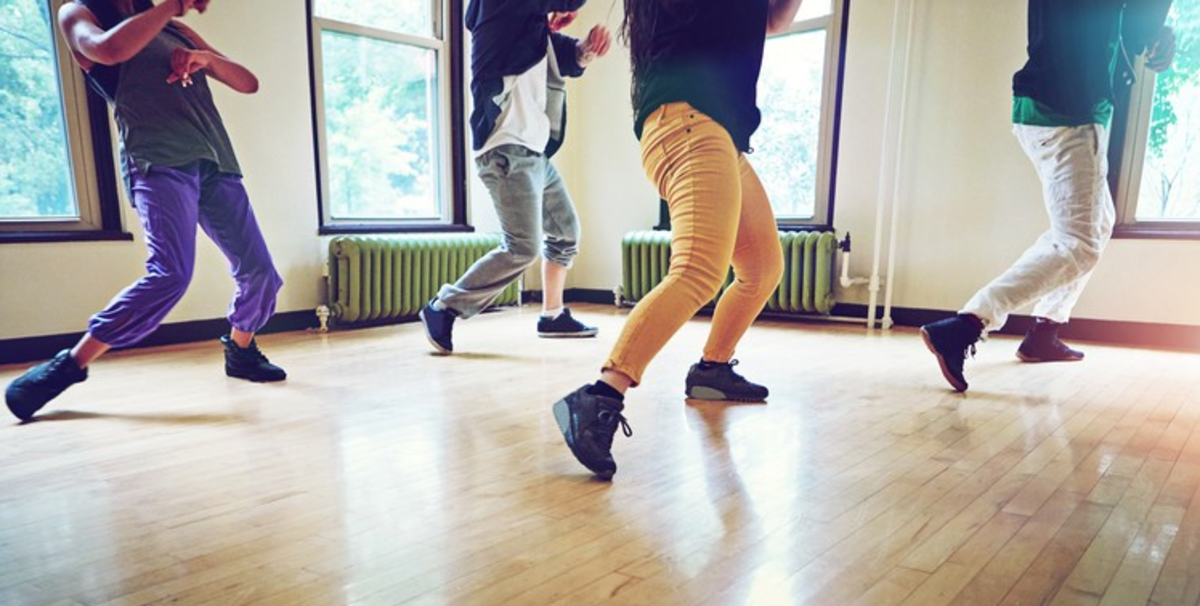 Random dudes sucking on their beer aren't your audience. Also, like the point above mentioned, your average dancer is more preoccupied with how they look than anything.
Random dudes sucking on their beer aren't your audience. Also, like the point above mentioned, your average dancer is more preoccupied with how they look than anything.
If there's one thing to keep in mind it's to be toned-down and low key
Don't be a spaz and try to pull off some fancy moves unless you 100% know you'll look good doing them. It's better to reel yourself in. Over reaching and flailing around is worse than blending in and being a bit boring and unoriginal. Don't feel you have to pull off tons of new moves every second and put on a show for everyone either. It's okay to dance in a simple, repetitive way and just enjoy your friends' company.
Acquire a basic, reliable dancing 'core'
You know when you're watching a movie or TV show and there's a scene set in a dance club, how the extras in the background will often to be dancing in a kind of simple, nondescript way? That's the 'core' I'm talking about. If you know how to do that, then in a lot of situations that's actually all you need. However, if you want, you can later choose to build off your base and make your style more fancy.
However, if you want, you can later choose to build off your base and make your style more fancy.
To get that core stand in front of a mirror with some not-too-fast music on, or just read along and imagine you're doing the following:
- To dance you've got to move your body in time to the beat of the music. The most basic newbie mistake you can make is to move out of sync with the beat. Don't know the beat I'm referring to? Put on a song and listen for the underlying, repeating thump-thump-thump pattern. Every style of music has a different speed. It doesn't take much practice to learn how to hear it.
- Okay, you're just standing there in front of the mirror with some song playing. Now try moving your arms back and forth to the beat slightly, while keeping your legs ramrod straight. You'll notice that looks totally off. So the next most basic thing you've got to do is bounce up and down on your knees. So keep everything else still, and just move your knees up and down to the music.
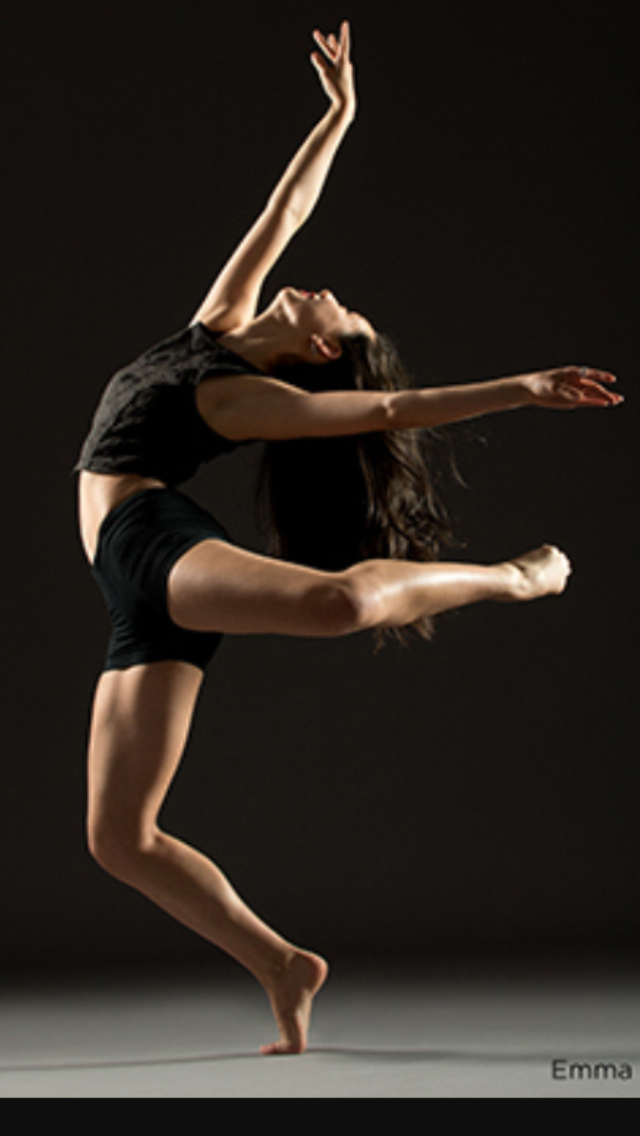
- That still looks weird, since you're just going up and down like a piston. So rotate your torso a bit in time with your knee movements, a little like you're skiing. Keep your torso fairly loose and relaxed.
- That's looking better, but your arms are still stiffly hanging at your side. So try relaxing them a bit and let them swing up and down with your knee bends and torso rotations.
Once you're standing in one spot, bouncing on your knees, turning your torso a bit, and moving your arms somewhat, that's about the absolute bare minimum you can do to be considered dancing. Like I said, sometimes that's all you need. If you didn't know how to dance at all, and stopped right here, that's a lot better than nothing.
However, while still staying in the realm of dancing in a super generic 'core' way, you can do little things to spice up the bare minimum:
- Don't just limply swing your arms, get your shoulders into it.
- Take steps side to side, or back and forth.
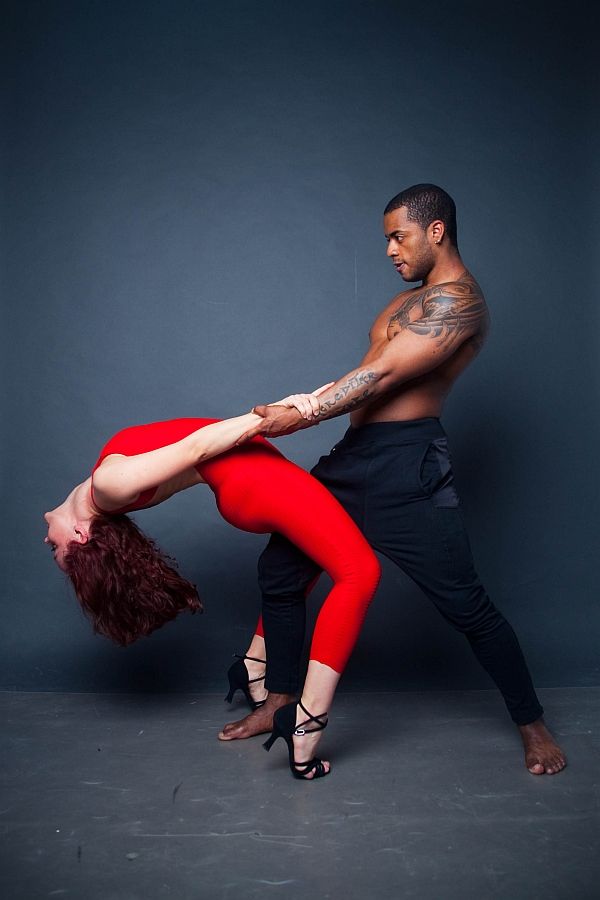
- Mix up your arm movements.
- Nod your head.
- Do little pivots or twists on one foot, or both feet.
- Don't just slightly rotate your torso, move it back and forth, or from one side to the other.
- Pick up one foot ever so slightly, then the other, to kind of march in place. Don't overdo the movement and look like a robot, just move your feet a tad.
- Mix up the possible arm, torso, and leg variations. Find a combination that looks good and do it for a while, then switch to another one. Don't change things up to the point where you're doing something new every half a second. That looks too scattered.
At this point you're hardly going to win a dance competition, but you're at the level of those movie extras, and 75% of the people you'll see out at a bar. At this point you really could develop no further in your dancing ability and be able to get by on a dance floor for the rest of your life.
The thing with this basic core is that it's pretty adaptable to the standard kinds of music you'll come across. If you're dancing to Hip Hop, just make all your movements a little more Hip Hop-ish. If you're dancing to retro 80's Pop, just make all your moves a little more cheesy and energetic.
If you're dancing to Hip Hop, just make all your movements a little more Hip Hop-ish. If you're dancing to retro 80's Pop, just make all your moves a little more cheesy and energetic.
Add some more fancy moves and sequences onto your core if you want to
If you dance in a basic way you'll get by, but you won't stand out a ton. If you want to look a little slicker you can start adding in some canned movements, or sequences of moves. There's more of a Risk/Reward thing going on at this stage. You've got to work at it more as well. Dancing generically is safer and easier. If you try to pull off some awesome routine and bungle the execution you'll look clueless or goofy. You need to practice to make sure you look good. Some places to learn new moves are:
- By watching strangers dancing at a club and stealing ideas from them.
- By watching your friends dance.
- By watching movies or music videos.
- Through online video tutorials.
- Through dancing-oriented video games.
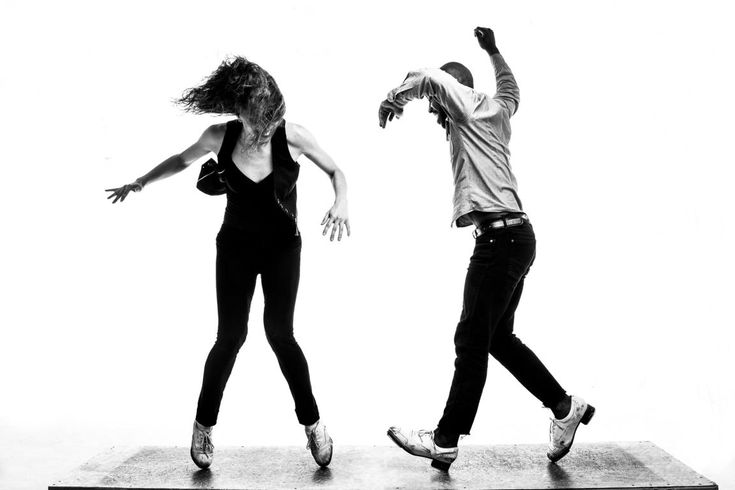
- By experimenting and trying to come up with some moves of your own.
- By taking an actual class.
The best way to learn is to just practice
If you get into the habit of dancing around at home in the spare moments you're listening to music it won't be long before you start to get the hang of things. After that the more time you put in, the more you'll refine your style.
Get in front of a mirror, put some good music on, and start dancing to it in the basic way I mentioned above. Remember, if your instinct is to jump around a lot or be a bit spazzy, consciously tone yourself down. Try to get comfortable with the typical, boring way of dancing first. A lot of the time on actual dance floors you won't have that much room anyway, so if you only practice moves that requires a lot of space you'll be put in an awkward spot when you end up somewhere more packed.
One way to deliberately practice is to try working on one aspect of dancing at a time, then putting the pieces together.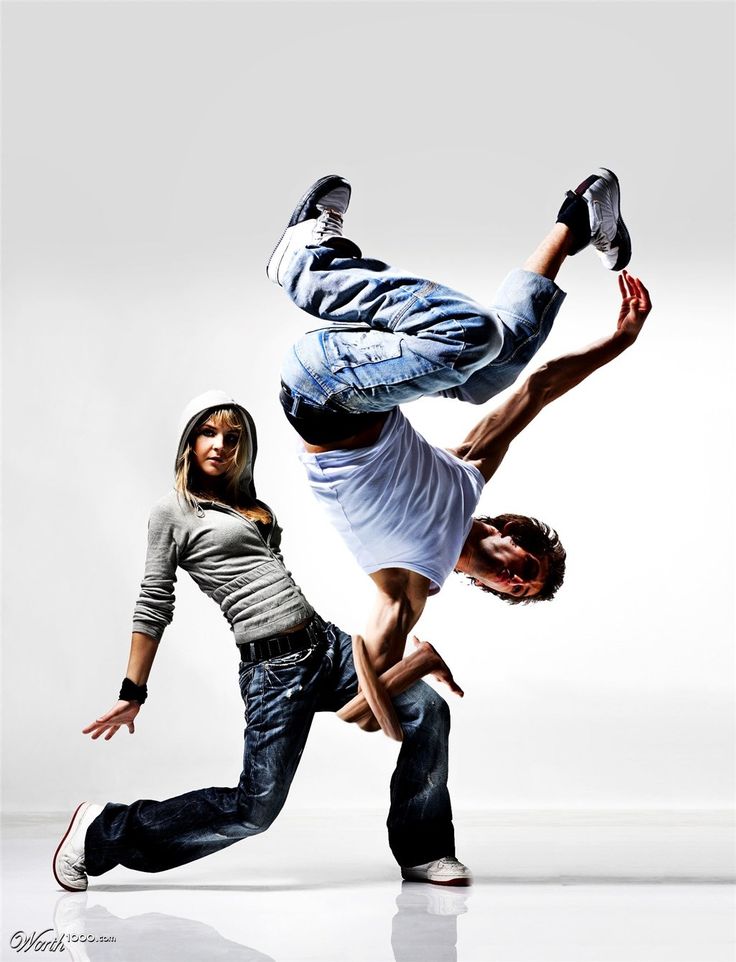 This may not look good in the moment, but it'll let you concentrate on and isolate certain aspects of how you move. So you might keep everything else fairly still, and only try out different arm movements, or ways of moving your torso. Or you could try different ways of stepping back and forth, or moving only one leg at a time.
This may not look good in the moment, but it'll let you concentrate on and isolate certain aspects of how you move. So you might keep everything else fairly still, and only try out different arm movements, or ways of moving your torso. Or you could try different ways of stepping back and forth, or moving only one leg at a time.
Article continues below...
Practice different dancing scenarios
Aside from figuring out how to move your body, there are different situations you'll find yourself dancing under:
Dancing on a dance floor where you have a lot of room
This is the easiest as you have all the space you need, and you can do somewhat more showy stuff if you feel like it. Sometimes the ocean of space can feel like too much to work with or make you feel exposed and self-conscious though.
Dancing on a crowded dance floor
Here your movements are really restricted. When you're practicing make sure to keep your feet rooted to the ground and don't swing your arms out too much.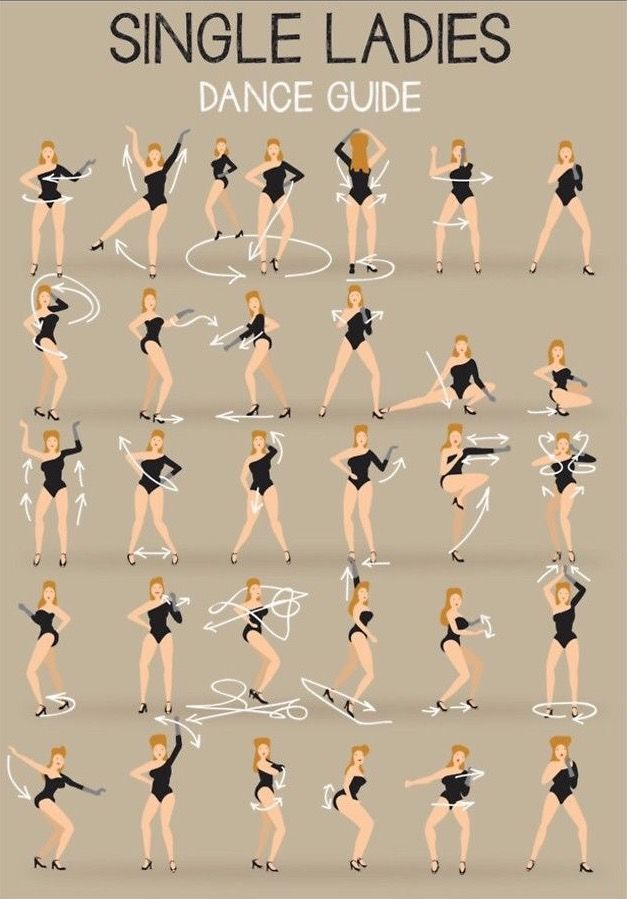 Try to make your movements look good anyway.
Try to make your movements look good anyway.
Dancing close and face to face with someone else
The issue here is knocking knees and not being able to extend your arms too far in front of you. Try dancing really close to a wall to get an idea of what it's like. Or you can try dancing really close to a full length mirror. It's totally goofy looking, but it's still a good way to get used to the feeling of being near someone.
Dancing with a partner
Here I'm referring to partner dancing in an informal, improvised way, not doing a specific dance like the Tango. Of course this is something that you can't practice on your own super effectively. Still, you could put your hands out in front of you like you're holding someone's waist or shoulders and practice moving within that restriction. I don't blame you if you don't want to do this. It's definitely a bit silly. Still, if the idea of dancing with someone makes you uncomfortable, practicing like this can take the edge off.
More practical advice would be to take a salsa, swing, or ballroom dancing class, asking your friends to teach you to dance, or practicing with your partner, if you're seeing someone. If it doesn't make you anxious, you could even try going to a club and trying to dance with someone you meet there.
Non-verbal communication is important as well
Body language plays a role in dancing too. It would look strange if someone was dancing to a 70's funk song with the mannerisms and facial expressions of someone listening to 90's Gangsta Rap. You don't want to be too exaggerated or hammy with your body language, but it is something to subtly bring into the equation. The other basic thing about body language is that sometimes the difference between someone who looks good and so-so on the dance floor is their non-verbals. If someone looks uncomfortable and bored, they may come across as dancing poorly. The same movements with some energy and confidence can look fine.
Dancing is a physical activity
Simple tip here. The better shape you're in, the easier dancing will be. You'll be able to do more, have more energy, and keep at it for longer. Basic things like aerobic fitness, flexibility, and some endurance in your legs and torso help.
The better shape you're in, the easier dancing will be. You'll be able to do more, have more energy, and keep at it for longer. Basic things like aerobic fitness, flexibility, and some endurance in your legs and torso help.
Dancing to an unfamiliar style
For the poppy dance music you most typically hear in bars and clubs you can usually get away with dancing in the generic style I outlined earlier. Though if you've ever been to a club that caters to a different scene you'll know other genres of music have their own types of dancing.
If you're in one of these places, it's not the end of the world if you go ahead and dance the usual generic way, and just try to make your movements conform somewhat to that subculture's style. You won't fit in perfectly, but no one is going to run you out of the joint. However, if you're interested in dancing to that type of music more in the future, it's obvious that you'd want to try to learn its more specialized moves.
A semi-warning about dance classes
Without a doubt you'll learn a lot if you a take a class, but sometimes people get a shock when they then go to a club and have to dance spontaneously. They can't just start swing dancing or bust out a 14-step choreographed Hip Hop routine. There are people who have taken years of dance classes, but they're inhibited when it comes to dancing at clubs. They feel lost, put on the spot, and like they're expected to perform.
They can't just start swing dancing or bust out a 14-step choreographed Hip Hop routine. There are people who have taken years of dance classes, but they're inhibited when it comes to dancing at clubs. They feel lost, put on the spot, and like they're expected to perform.
Dancing badly on purpose
I think there's a good time and a bad time to dance in a poor or silly way as a joke. The bad time to do it is when you're not comfortable or experienced with dancing, and you dance like goofball to avoid having to do it for real. People tend to see through this, and any humor that comes out of it only has a shelf life of a minute or so.
The good time to do it is when you're with some friends, you all know how to dance properly, and you just throw in the occasional campy movement or routine as a way to joke around and have more fun. It comes off well in this situation because everyone realizes you're doing it because you choose to, not because you're trying to hide how ill at ease you feel.
Drinking to loosen yourself up
Lots of people need to get some alcohol in them before they feel confident enough to hit the dance floor. In a perfect world everyone would feel comfortable dancing stone cold sober, but realistically some of us need a little extra help. Within reason I think this is fine.
When alcohol tends to be helpful is when someone knows how to dance half-decently, but are just a smidgen reserved - most people basically. When drinking tends to backfire is when someone doesn't really know how to dance, and never tries unless they're totally hammered. The results can be pretty sloppy. Things can also get embarrassing if someone is just learning how to dance and is inclined to be spazzy. The alcohol tends to bring those tendencies to the surface.
In conclusion
This is a trite thing to say, but despite everything you've just read, you should just enjoy yourself and not over analyze things. Have fun and don't worry about what other people think of you. Blah Blah Blah. The end.
Blah Blah Blah. The end.
10 Basic Dance Moves Anyone Can Learn
Do you ever watch someone dance and wonder how they come up with moves so easily?
Great dancers often master a specific set of moves that they can fall back on again and again.
Read on for 10 basic dance moves you can learn in minutes and use every time you wanna dance.
P.S. You can learn all of these moves for FREE on STEEZY Studio! No cc required. 😉
1. The Two-Step
When I first started dancing at parties, the Two-Step was the first move that truly came naturally to me.
It really is as simple as stepping from side to side to the beat!
If you're looking for something foolproof that allows you to just groove and enjoy the music...
Boom. Here it is.
2. The Monestary
This move was born in a club called Monestary out in St. Louis!
It’s built on a Two-Step, so if you took that class, you’ve already got a foundation for the footwork.
But rather than bringing your feet together, you’ll tap them to the front with your knee and foot turned inward.
Then, as you tap the feet, you’ll move your arms and shoulders in a circular movement.
3. Booty Pop (Side To Side)
Like the Woah, this sexy move is super TikTok-friendly – but with more feminine energy.
To do a booty pop to the side, you’re gonna bend your knees, put your hands on one knee, and then bring the other leg from bent to straight while turning your knee inward.
If you’re a long-haired baddie, be sure to keep all your hair on one side so it doesn’t flop in your face as you pop!
Read this article on How To Dance Sexy to get more tips on pulling off moves like this one!
4. The Billy Bounce
Surprise – this club-ready move is built on… a bounce!
But what makes it unique is that your knees will come inward on each bounce rather than just up and down.
Once you’ve got the funky lil knee bounce down, you’ll add in an upward kick on each side.
The best thing about this move is that while the footwork takes a few minutes to learn, you don’t necessarily need to add an arm movement to make it look cool.
Just keep your arms front and center.
5. The Woah
Even if you’re not actively involved in the dance community, you’ve probably seen people hitting the Woah – on TikTok, Reels... all over your newsfeed!
Whether you wanna make a viral video of your own, or you’re just looking for a fun, basic dance move to pull out at the clerb, this one is too good not to learn.
Since the locking arm motion is so sharp and pronounced, use the Woah to accent the heaviest bass beats in your favorite songs.
6. The Dougie
Yes, the Dougie is a real dance move!
Like the Two-Step, you’ll be shifting your weight from side to side, but this time, adding some shoulder movements and a lil more attitude.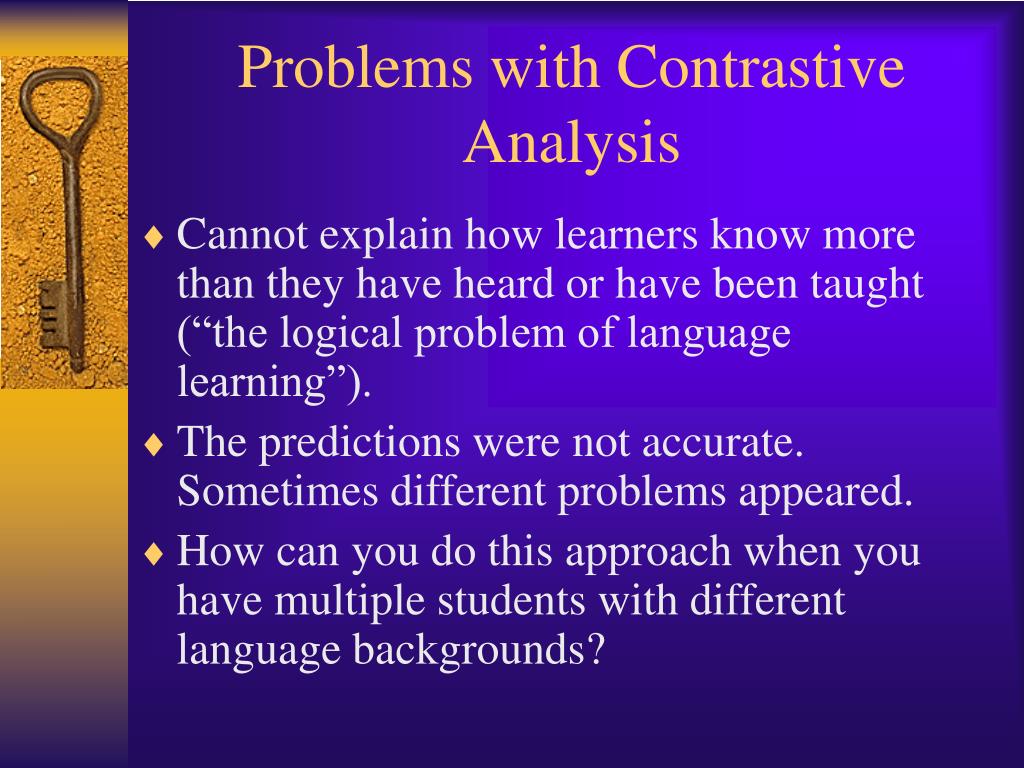
Try this one out to some songs other than the one that made it famous – you’ll find it works with any hype beat.
7. Scoop Arm Into Hip Sway
Sooo this one is more of combo than a move, but it only takes a few minutes to learn and it works with any fun sassy song…
So it deserves to be here, ok?!
For this move, you’re gonna scoop your arm across your chest, then bring it over your head, and finally point it in front of your chest.
Once you point the arm in front of you, you’ll sway your hips from side to side and groove it out.
8. The Bust Down
The Bust Down was popularized by LA rapper, Blueface, in his 2019 club jam “Thotiana”.
You’re gonna grab your belt, put one arm in the air, and allow your body to dip with the beat.
Note: Licking your eyebrows like Blueface is fun, but not required. 😛
9. The Biz Markie
The Biz Markie is an old school party dance inspired by, you guessed it, rapper Biz Markie!
It rose to popularity in the 90s, when Biz Markie himself began performing it on stage.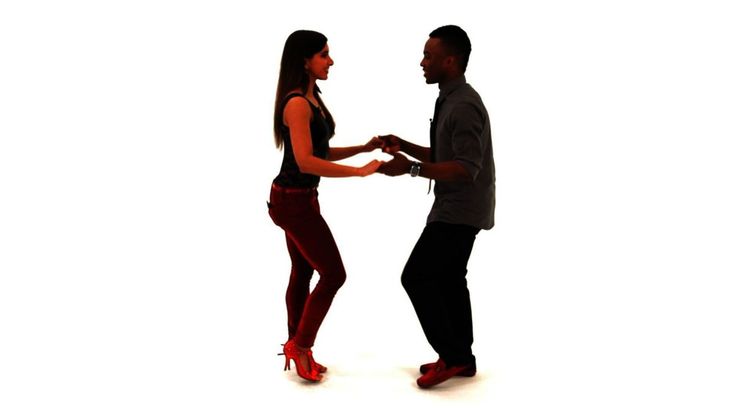
As you practice it, remember to allow your shoulders to bounce – the bounce is what gives this move its cool, laidback flavor.
Wanna learn more about classic Hip Hop moves? Read this: How To Dance Hip Hop for Beginners
10. The Humpty
For this bouncy move, you’re gonna circle your hips to one side as your bend your knees.
Then, you’ll jump and cross your legs, allowing your feet to tap the floor briefly before you jump back to your original legs apart position.
Once you’ve got that down, you can complete the move by adding in a windmill motion with your arms.
The leg cross in this move makes it perfect for any Hip Hop song that features a double bass (aka that BOOM BOOM sound that you hear in songs like “Lip Gloss” by Lil Mama)
We hope you enjoyed learning some of our favorite basic dance moves.
Of course, this list is just a start!
In addition to the 10 moves on this list, STEEZY Studio has 100+ other FREE beginner classes where you can learn step-by-step from the world’s best teachers.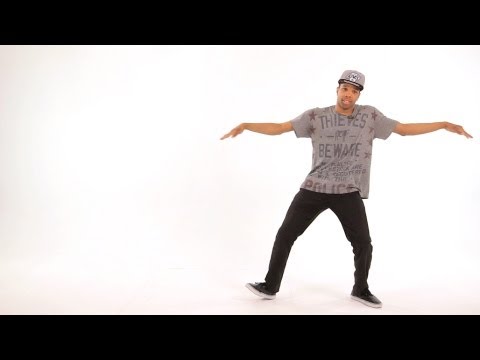
What To Read Next:
30-Minute Dance Workouts That'll Trick You Into Becoming A Better Dancer
How To Learn Popping
How To Start Dancing Hip Hop For Beginners
How To Learn Dance At Home
7 ways to improve your connection while dancing: zoukability — LiveJournal
7 ways to improve your connection while dancingPosted by Gaëlle Céline Le Vu, France
Original: https://zouksidedown.wordpress.com/2014/03/21/ 7-ways-to-improve-your-connection-while-dancing/
The article is a logical continuation of the previous one: What does your very first movement in a dance with a girl say about ...
"Connection" - connection, connection, clutch.
Connection in a dance context - such mutual understanding in a pair, when the partners seem to be connected with each other, are completely synchronized , they clearly feel the leading-following of each other and represent a single whole. I cannot find the same capacious and harmonious analogue of the word connection in Russian, so I will use the English version. The concepts of "contact" and "relationship" are closest, but they are not quite the same thing.
I cannot find the same capacious and harmonious analogue of the word connection in Russian, so I will use the English version. The concepts of "contact" and "relationship" are closest, but they are not quite the same thing.
A dance without a connection is not a complete dance. One or both partners are immersed in themselves, focused on the mechanical execution of movements, do not feel their partner, use him as a simulator for working out ligaments. The dancers hold hands but they not together with . The ability to make many complex connections, even if they are technically perfect and you are a teacher in general (and suddenly) - does not affect the quality of the connection in your dance in any way;)
The topic is especially relevant, painful and suffered by me as a partner. You can live in peace and enjoy your role as a simulator and a moving mass, if you have never met this connection. But one day you will come across a partner with whom you will feel like you are somewhere in space, you want to dissolve in this dance.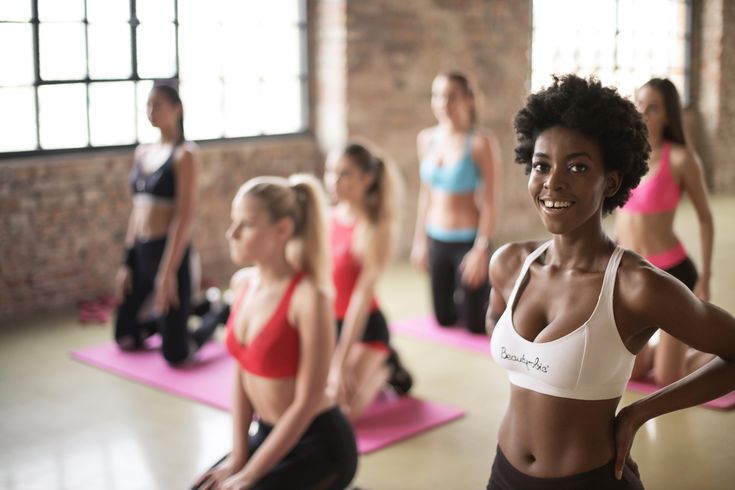 And your world will never be the same again. You'll understand what I'm talking about when it happens.
And your world will never be the same again. You'll understand what I'm talking about when it happens.
There is a lot of text ahead, but if you read everything carefully, think it over and start using it, then there will be a lot more happy smiles on the dance floor, believe me! I encourage affiliates to bookmark this article and re-read it periodically.
Ready? Go!
________________________________________
"The best thing about a hug is the charm of eternity in a couple of seconds. It's magic that allows two people to ascend to heaven in an instant."
(Anna Giacomo)
The first article talked about the benefits of hugging, building and maintaining contact in dance. But it's not always so easy: you may not quite understand how to achieve this, even if you really want to. In this article, we will look at several ways to improve the connection.
1. Feel. Enjoy the moment.
Don't let the hug be purely mechanical: don't automatically put your hands on your partner while you look around and think about the next move.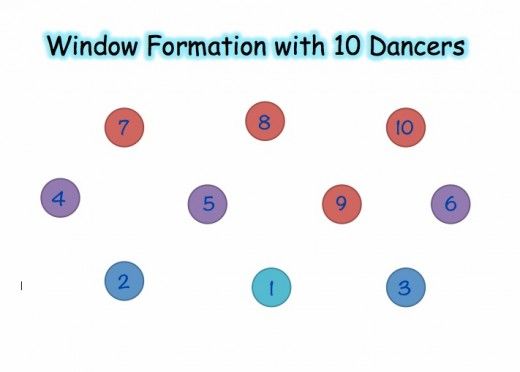 Enjoy this moment, close your eyes (while you are standing still, it is not necessary to check what is happening around). Relax, open up to your partner, let her relax with you. Be attentive to her. Maybe she smells like sweet perfume, or maybe she's sweating a little. Or she gets nervous and thanks god just for that0008 , you have time to be with her before the dance begins. Maybe she's excited and looking forward to having a great time. Maybe you can hear how fast her heart is beating. Perhaps she is too tense: she is tired, which means that your dance should be easy, or is she just nervous and you will help her relax? Pay attention to these details, they can be seen. Be here and now. Your partner will know if you are not with her .
Enjoy this moment, close your eyes (while you are standing still, it is not necessary to check what is happening around). Relax, open up to your partner, let her relax with you. Be attentive to her. Maybe she smells like sweet perfume, or maybe she's sweating a little. Or she gets nervous and thanks god just for that0008 , you have time to be with her before the dance begins. Maybe she's excited and looking forward to having a great time. Maybe you can hear how fast her heart is beating. Perhaps she is too tense: she is tired, which means that your dance should be easy, or is she just nervous and you will help her relax? Pay attention to these details, they can be seen. Be here and now. Your partner will know if you are not with her .
2. Relax.
Guys... I often hear some of you say things like "but she doesn't want to cuddle" or "she doesn't want to wait." Who is leading here? I thought it was you?..
This is the first moment. YOU are leading. This means that most of the decisions here are made by you. This does not mean that you should try to get your partner to do what she cannot do, or lead to something unnatural with her body movements, or try to perform with her the very movement that you so badly want to work out. This means that you must be attentive to her, see what is needed, and based on this, you begin to lead and show that you are here now for her.
YOU are leading. This means that most of the decisions here are made by you. This does not mean that you should try to get your partner to do what she cannot do, or lead to something unnatural with her body movements, or try to perform with her the very movement that you so badly want to work out. This means that you must be attentive to her, see what is needed, and based on this, you begin to lead and show that you are here now for her.
If you feel that your partner is walking without guidance, which is typical of many beginners, think about it: why is that? I'm sure it's often because she's nervous. An experienced partner knows how to wait for the lead, but it takes time to learn this, it's not as easy as it seems.
If you feel that your partner is not waiting for you, gently make her wait . If you see her in a hurry, slow her down . Create gentle tension in your hands, and if you really need to stop her now, you can gently press your palms or thumbs into her hands. In most cases, there is no need to use them, and therefore, when you do, your partner will feel it and will be more attentive to you. Don't follow her lead! I'm serious.
In most cases, there is no need to use them, and therefore, when you do, your partner will feel it and will be more attentive to you. Don't follow her lead! I'm serious.
Second moment. Whatever you do, your partner will try to mirror you . If you see that she is nervous and in a hurry, and you begin to hurry along with her (because sometimes you start mirroring us too), what good will come of it? On the contrary, why not force her to be attentive to you in the same way that you are attentive to her. Give her undivided attention, and then she will begin to relax and trust you => and be better behaved. Do not think that the partner does not want to lead. Once again, in order for her to feel led and patiently follow, she first needs to relax. So, if you are unable to help her relax, she will not melt in your hands and will not behave as well as she could. If you don't show that you are there for her, she will go "somewhere else" and it will show up in your dance. The dance will look and feel disjointed.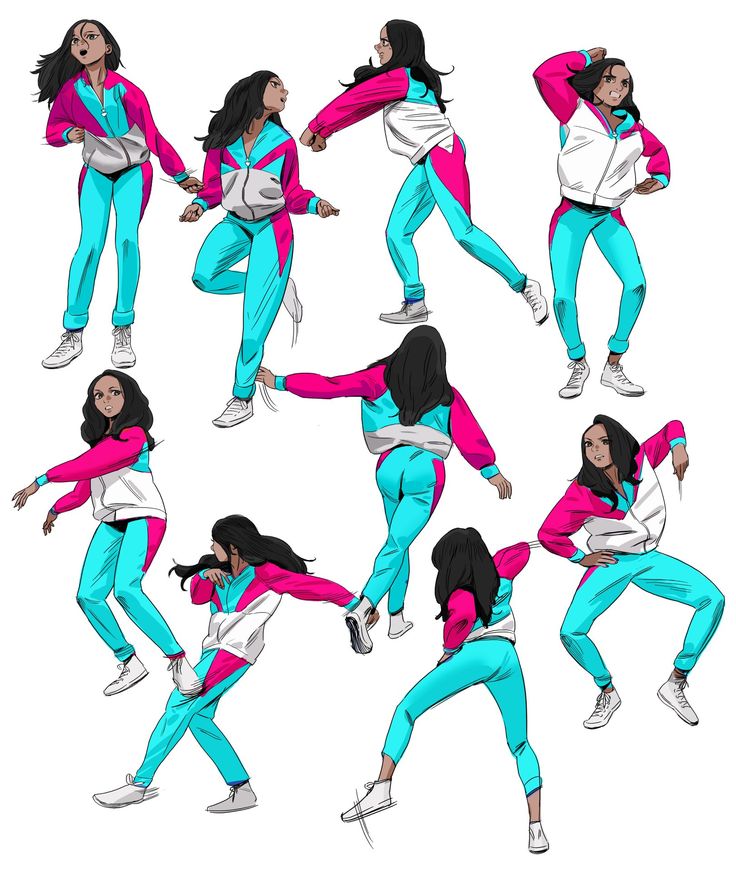
But before you can help your partner relax, you must also relax yourself. Relax your shoulders, remove tension from your neck, the girl will feel it, and then both of you will be able to feel the connection better. (Eventually, she wraps her left arm around you as you dance into a close embrace, she feels ALL of your tension.)
To recap. Relax yourself first. The partner will feel it and will also relax.
3. Touch heads.
This is optional, but a very good tool. Some partners may not want this kind of closeness with you, some of you may be too sweaty, or your shyness gets in the way. But let's assume the conditions are ideal. Use it as much as you like!
The simplest position is the close hug, but other variations can be used. For example, if you turned your partner and stand behind her, then it can be very pleasant for her to feel the touch of your head. You will feel more attentive to her, and she ... Believe me, she will be very good! But don't forget to feel it. Don't do these things because you have to. Relax and enjoy them.
Don't do these things because you have to. Relax and enjoy them.
In general, think about when you can use it and use it whenever possible.
4. Look at her. Or her movements.
Vision is a very important sense for a person. Let's use it!
From both a practical and an artistic point of view, it will be very good and beautiful if you look at the movements that you create. You can look directly at your partner, but if you stare completely intently, then this is somehow not very good. Not looking at her at all is also unpleasant and strange. But you definitely can't go wrong if you look at the moves you're leading. Why? Because you are constantly following her with your eyes, but at the same time you are not trying to aggressively look into her soul, if you know what I mean. Are you doing a simple laterao? Engage your chest and head, let them follow your arms. Do you lead to headwork? Follow these movements with your eyes and head, then you can connect your shoulders. Add more life to your body, accompany your partner's movements with your body. The girl will see it, at least feel it. This will greatly enrich your dance and add depth to it. Just think about what you are focusing on.
Add more life to your body, accompany your partner's movements with your body. The girl will see it, at least feel it. This will greatly enrich your dance and add depth to it. Just think about what you are focusing on.
If you look somewhere else and at other couples, it looks like your insecurity (and this will negatively affect the connection, you are the host), or even as rudeness if things are really bad. Most likely, the partner will think that you are too shy and will try to understand you. Be careful with the image you create. Just focusing on the right things will already give you a huge advantage and make you feel better.
!!! This does not mean that you should not watch where you are going.
If you want to lead to a movement that involves moving in space or amplitude work with the partner's body, first look, WHERE you will lead her, and then lead . This way you will avoid clashes with other couples and add some style to your dance, because.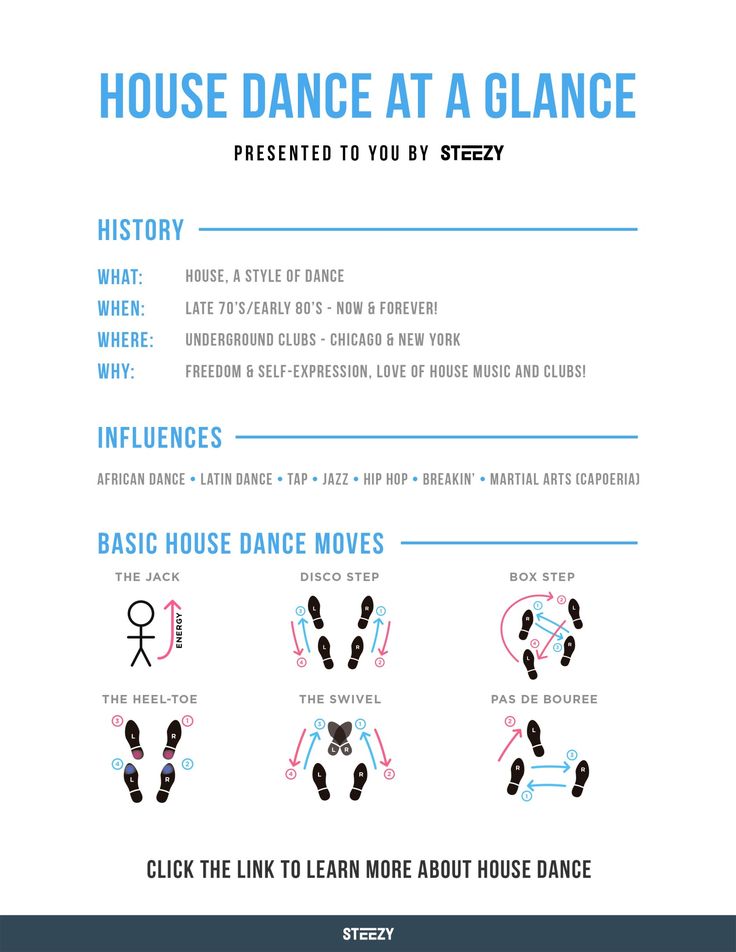 your gaze will predict the next move.
your gaze will predict the next move.
Remark: very often the partners do not take into account the amplitude of the lady's head movement on headwork, different rotations, etc. Even if the partner stands with her feet in one place, the amplitude of movement of the upper part of her body can be greater! It is very unpleasant in rotation to crash your head into another pair.
5. Vary the tempo.
Yes, girls are sometimes too demanding, and learning to lead can be difficult. But if you practice, it will get better and easier.
One of the things girls go crazy over is musicality, or let's call it changes in speed for now. From simple, you can lead to some movement and in the process change its speed. It works with anything, anywhere, anytime.
The easiest way to use it is when driving. It doesn't matter if you are opposite, or to the side of your partner, or behind - imagine that you are taking her for a walk. Listen to music.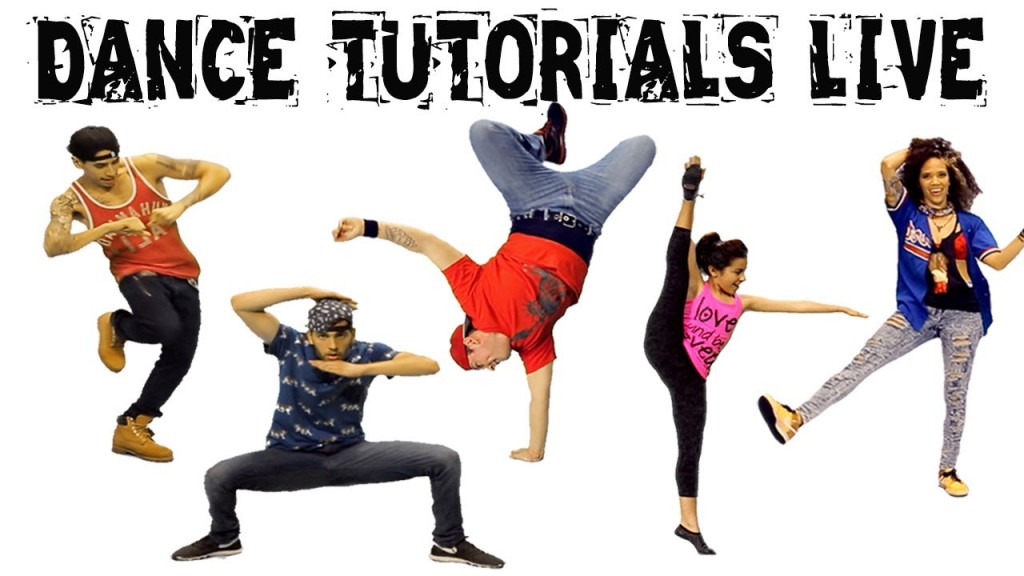 If you hear a fast succession of accents or a melody build up in speed, why not speed up your walk? If the speed of the music is the same, then you can go at a steady pace, or play around and change the speed as you like. Why not? If the music slows down and you are walking at a normal speed, don't get hung up on the 1-2-3 count, you can use slow and the second quick, and skip the first one (tum chik chik). Or you can slow down even more and use only the slow beat (tum chik chik) Everything is possible.
If you hear a fast succession of accents or a melody build up in speed, why not speed up your walk? If the speed of the music is the same, then you can go at a steady pace, or play around and change the speed as you like. Why not? If the music slows down and you are walking at a normal speed, don't get hung up on the 1-2-3 count, you can use slow and the second quick, and skip the first one (tum chik chik). Or you can slow down even more and use only the slow beat (tum chik chik) Everything is possible.
Just add variety to your movements, don't dance at the same pace all the time, play with the music. Play with your partner. With great probability, this will increase her attentiveness, she will have to become more attentive to you, and the connection will become better.
6. Keep in touch.
One of the main rules of a good connection is to keep in touch. Have you ever had a professional massage? Have you noticed that the massage therapist constantly keeps in touch with you? Even if he needs to take oil or something else, he tries to keep contact with you with one hand.
If you lose contact, you need to rebuild it. And if the connection was not very good, then you run the risk of destroying everything that you have just achieved. One of the easiest ways to maintain contact is to place your right hand on your partner's back as she makes a simple turn and now has her back to you. This is not just a rule of "good technique", it allows the partner to feel you and understand where you are. She will know that you are still here.
If you follow this simple rule well, your partner will be more comfortable and trust you more. Naturally, she will not be able to explain why she felt this way, she will remember the dance as "it was very nice." But you know ;)
It's the little things that make for a great connection, and therefore a great dance.
7. Waves and other bodywork .
Last but not least. In a conversation on this topic, I cannot but mention the waves.
There are very, very many options for the execution of waves, you can write a separate article about this.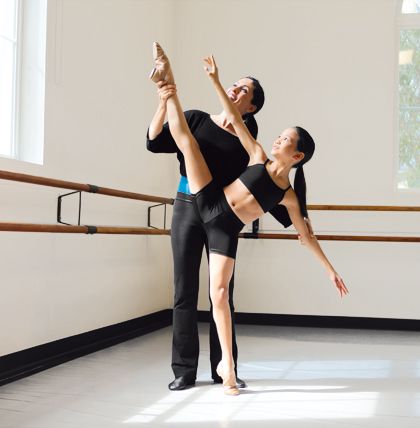 But within the topic of connection, distance and tone are of key importance.
But within the topic of connection, distance and tone are of key importance.
Partners:
Pay close attention to your partner's hand on your back. Do not arch your back, do not try to walk towards your partner if he is not leading. He will lead, not you. Be sure to pay attention to this moment. Most likely you think that this does not apply to you, but my experience of conducting for a partner shows that 80% of girls do not feel and do not understand my hand on their back. Every time I have to explain that I need to lightly press my back into my hand , and then I can feel the connection. Focus on your back, feel your partner's hand. If the hand moves away, then you follow it! Once you work on this, you will be much better behaved. Just give light pressure to your partner's hand and let him decide when to start and end the movement, when to slow it down, etc.
For partners:
Keep a good frame, put your right shoulder and arm in place. Don't twitch violently, it won't help. Stand straight, your chest is the basis on which the girl will make a wave. You can also make a small wave with her, but don't make it stronger than your partner, it looks very strange.
Don't twitch violently, it won't help. Stand straight, your chest is the basis on which the girl will make a wave. You can also make a small wave with her, but don't make it stronger than your partner, it looks very strange.
What is the meaning of the wave? For me personally, a good wave represents good contact and tone. By tone in this case, I mean contraction (abdominal contraction) and the work of the back muscles. When you start the wave, bring your chest and ribs forward and up a little, then your belly, then your hips. When your movement takes the form of a serpentine, the energy decreases and you return to the starting position.
If the dancers do it right, I guarantee you a very pleasant wave)
Quick reminder
Feel and have fun. Relax. Feel free to touch heads while dancing, it's a useful tool. Give your partner all your attention, look at her and at the movements that you create. Change the pace to keep the her attention.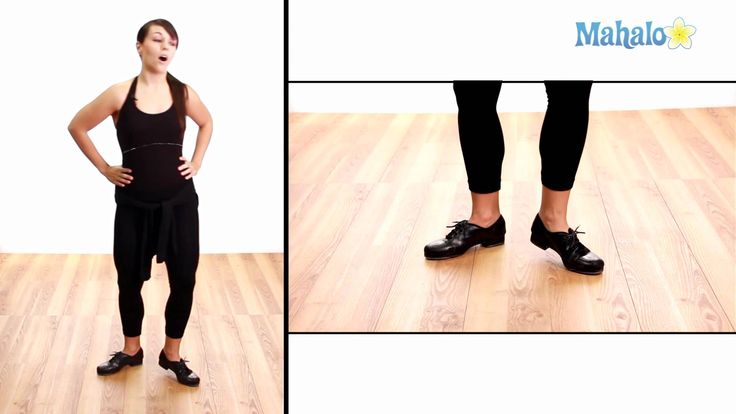 Keep almost constant contact with her. Use waves and body work.
Keep almost constant contact with her. Use waves and body work.
And at the end of this article is a demo of Freddy and Andressa, in which they use a wide range of possibilities of close embrace in dance. If, after all that has been written, you still do not quite understand what a connection is, then here it is in front of you.
You can follow the announcements of new articles through the VK group: https://vk.com/zoukability
Dive into the depths of the dance. Structure and movement: zoukability — LiveJournal
Author: Murasheva NadezhdaThe article is a continuation of the first part: "Dive into the depth of dance. Muscles"
I met the concept of structure only in the last year of my active motor activity, which, as it seems to me now, is rather strange. And at first I didn’t really understand what the meaning was in this concept in relation to the body and dance. It was only by delving deeper into the workings of the body and studying the physiology of movement in instructor courses that I began to understand what structure is and how it relates to our body and movement.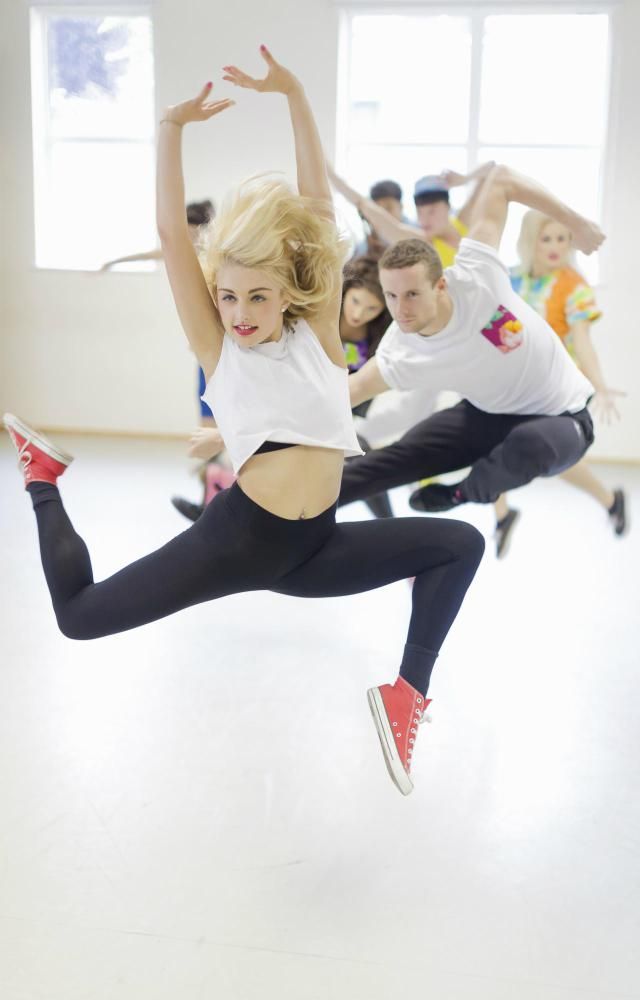
The phenomenon of structure is large and multifaceted, and I did not put everything at once in one huge article. Today I will share with you a general understanding of structure, the most comfortable, functional and safe body structure for dancing and the differences in structure in different workouts. About the secret of an interesting, varied, artistically filled dance.
WHAT IS STRUCTURE?
In the explanatory dictionaries, I found the two most suitable interpretations that apply to the structure of the body:
- "A certain interrelationship, mutual arrangement of components, structure, arrangement of something"
- "A set of internal connections"
That is, the structure of the body is what our body consists of (bones, muscles, nerves, vessels, etc. - their structure, location, functions), and also (which interests me much more) is the relationship of the components of the structure to each other. Today I will give you the basic idea of how it works and how it affects the dance, and next time I will continue on a deeper level.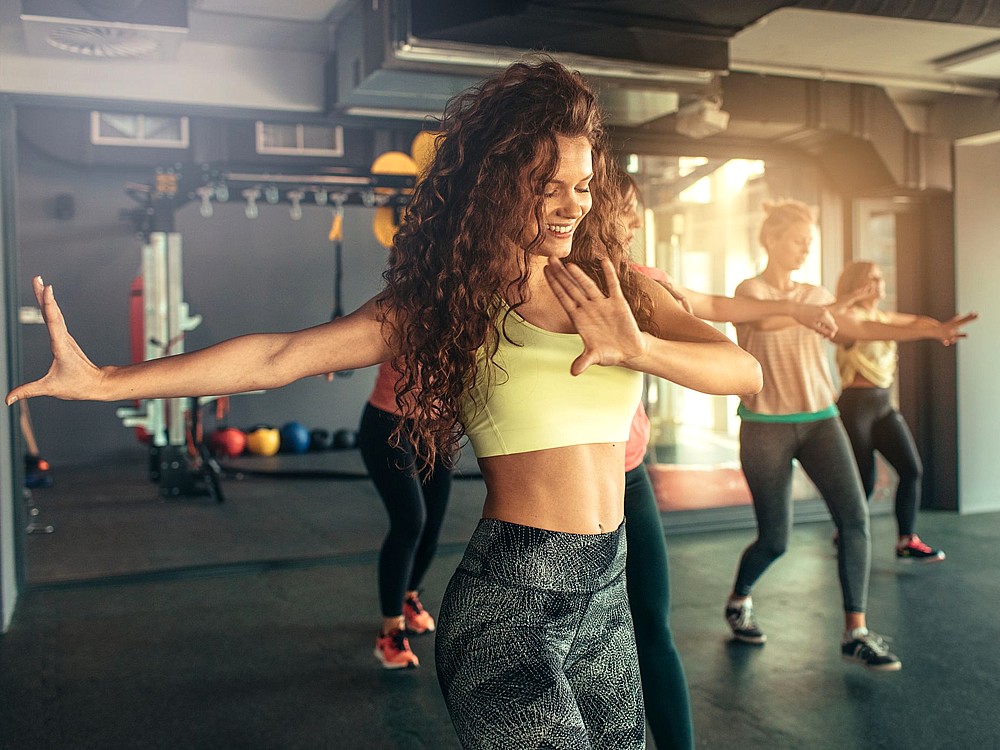
STATES OF MUSCLE TONE
In the context of this article, I will not analyze the structure of the muscle fiber as its structure, this is not necessary here. I am interested in the structure of different muscle states as a more global phenomenon that can be felt, touched, it can be consciously changed and used both in dance and in life.
So, there are three states available to any of our muscles: relaxation, tension, stretching.
Relaxation
Soft muscle, limp, feels like a piece of jelly. There is no tension in it, and, accordingly, there is no movement.
Unconscious relaxation of the muscle:
1) Normal healthy muscle: worked, got tired, after the completion of its work, it relaxed, since its further work is not required.
2) Weak muscle (hypotonicity): does not work for some reason. Making it work at first is extremely difficult, all exercises feel very difficult and nasty (typical exercises for training the thoracic spine). Usually it is not felt in any way, as if it, in principle, is not in the body.
Usually it is not felt in any way, as if it, in principle, is not in the body.
Mindful muscle relaxation:
We can adjust the speed of relaxation - in dance or in special slow exercises (Pilates, etc.) We can also consciously relax something that is chronically tense - for some this can be difficult, and this needs to be learned.
Tension
Rigid muscle contracted to perform some action. The greater the tension, the shorter and stiffer the muscle becomes. Tension can be dynamic (tightened up, performed an action - relaxed) and static (loads to hold a certain position, move a fixed support, etc.). Figuratively, tension can be compared to a spring compressed before a shot. After the shot, the spring should relax and return to its normal physiological state - relaxed, not compressed and not stretched. If this does not happen, then there is a dysfunction (hypertonicity) that must be dealt with, otherwise it will contribute to the development of more serious problems.
Unconscious muscle tension:
1) Healthy muscle: our nervous system itself controls the tension to perform any action (jump, bend, run, squat) - we do not need to think about the tension of all the necessary muscles in order to move It happened.
2) Muscle in hypertonicity: chronically tense, while not performing any action (lower back, upper trapezius, postural muscles of the spine). Rigid, immobile. At best, we feel its tension, stiffness, sometimes pain, we want to stretch and relax it. At worst, we live with this tension and are not aware of it until it leads to further problems. Here you need to spend extra time on learning to notice your tension, and then this will allow you to continue working on the problem. Chronic tension leads to infringement of nerve endings, to poor blood supply to muscles, connective tissues, internal organs, to the development of osteochondrosis, protrusions and diseases of the joints, to stretching of the tendons. I’ll tell you about the causes of chronic stress another time, I’ll tell you the great Secret ;))))
Conscious muscle tension:
This is when we consciously perform any movement or exercise, tracking the technique and condition of our muscles.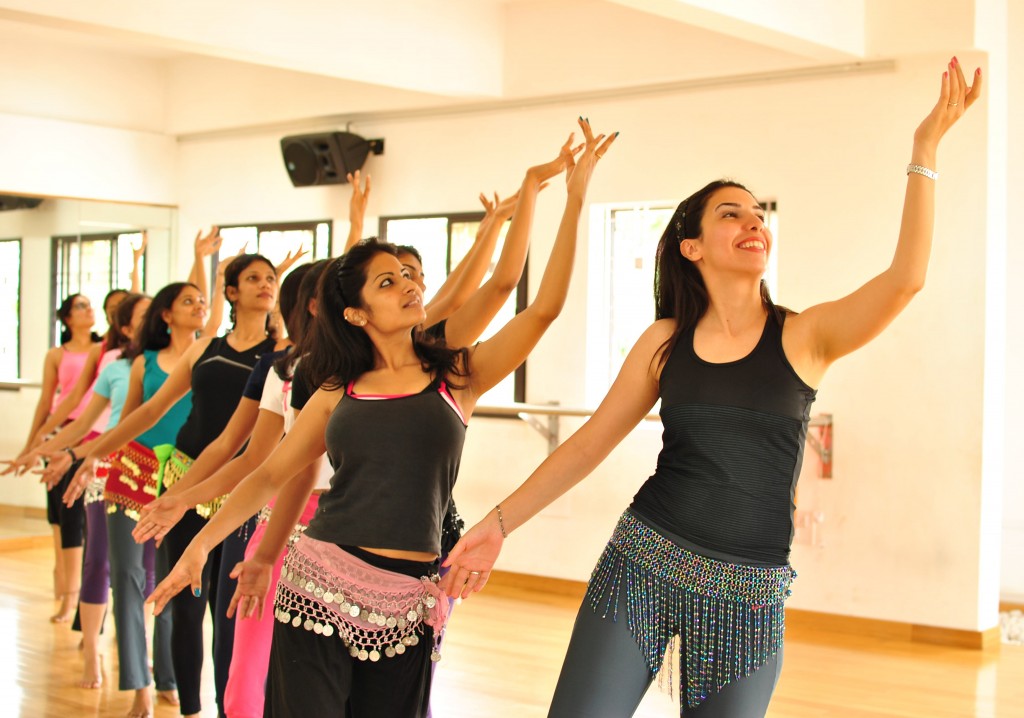 A necessary stage in order to develop muscle memory in oneself and then move correctly already unconsciously.
A necessary stage in order to develop muscle memory in oneself and then move correctly already unconsciously.
Traction
An elongated muscle that is in moderate tone and maintains this condition for some time. Not over-relaxed and not over-stressed. It can be compared to a stretched string or a bowstring. An important condition necessary for the correct execution of many movements, maintaining balance, for the health of the spine, and even just for plastic surgery. You need to learn how to move forward. If a person does not know how to do this, then he will perform all movements through tension, because he cannot do otherwise. Then his body will be rigid, movements angular and sharp. If you are not completely sure that you understand the essence of stretching and do not know for sure whether you can do it, then you do not know how. When you master stretching, there is no doubt what it is and how to do it. This is a real physical sensation that you cannot confuse with something else.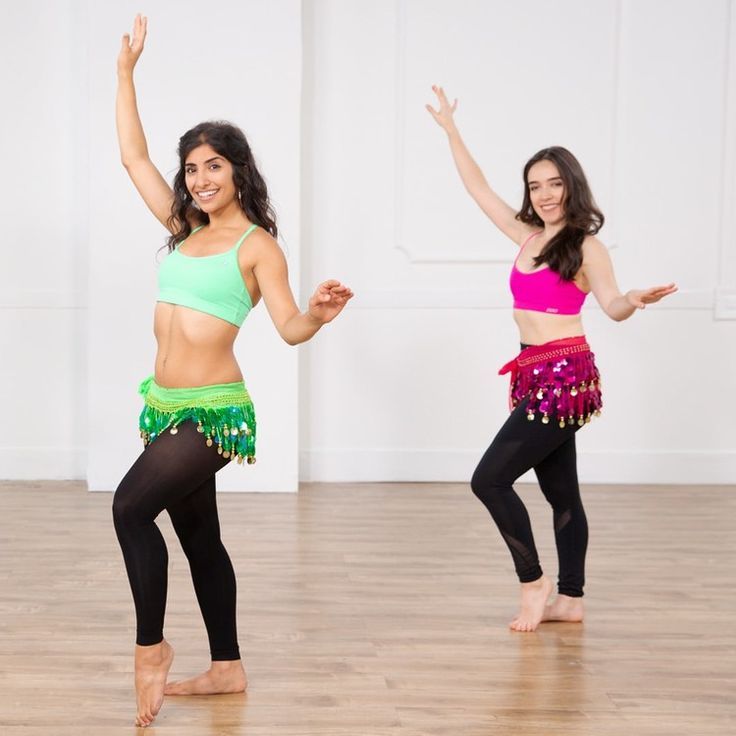
Unconscious stretching : yawned, stretched.
Conscious stretching: intentionally stretching our body in exercises, in dance. Ballet, Pilates, yoga will help you.
For harmonious control of your body and technical dance, it is important to be able to control all three states, switch them, combine several states at the same time.
Structure as a combination of states of muscle tone
In the dance there is a constant alternation of these states. Usually everything is built on traction. This allows you to keep a good balance, makes movements soft, flexible and strong at the same time, protects the joints from compression. By the way, all joint gymnastics and all Pilates are performed in traction.
In Zouk (with proper technique) we clearly see the constant alternation of stretching and relaxation. The same thing happens in contemporary and jazz-modern. In ballet, ballroom and more static styles, there is much less relaxation, and all movements are done on the stretch of the body, arms and legs.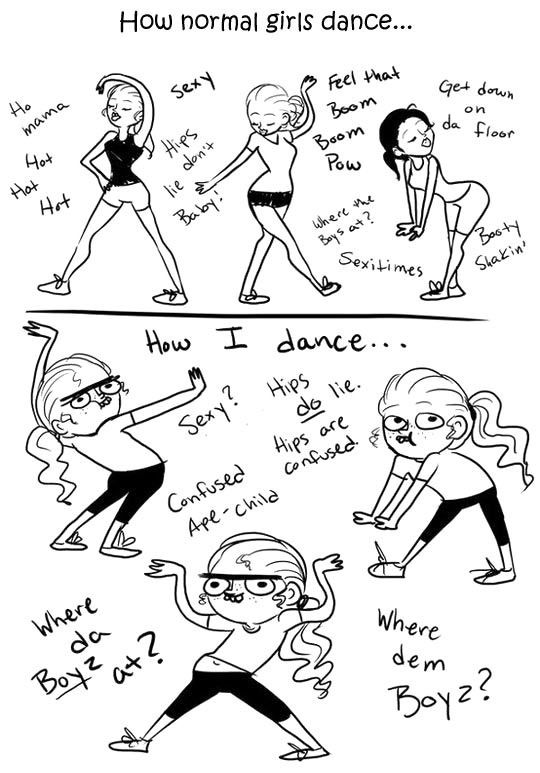 In contact improvisation and qigong, on the contrary, there is much more relaxation. But tension in all dances and many bodily practices is present only occasionally when performing some more complex elements and tricks: jumps, lifts, squats. If you are constantly tense in the dance, then you are clearly doing something wrong. Tension is the essence of strength training, not dance.
In contact improvisation and qigong, on the contrary, there is much more relaxation. But tension in all dances and many bodily practices is present only occasionally when performing some more complex elements and tricks: jumps, lifts, squats. If you are constantly tense in the dance, then you are clearly doing something wrong. Tension is the essence of strength training, not dance.
I think you yourself understand that in dance there will rarely be tension or relaxation in the whole body at once. Tension - in general, still happens - in ballet, etc. But complete relaxation can only be in contact improvisation, when we completely give our weight to the floor or partner. However, the zouk appears to be a very relaxed dance. Why?
In fact, in dance there is a simultaneous combination of states in constant dynamics. In Zouk, the most important thing is to stretch the body and relax the shoulder girdle. This is what allows you to make movements so plastic and flying. Only with a relaxed chest and a relaxed top of the trapezoid will it be possible to make beautiful, soft bones, waves, headworks, and so on. To prevent the body from falling apart and losing balance from this relaxation, the taut structure must be maintained in the center. If your center is something else (jelly or one big strain), then you will not have the physical ability to normally relax the top, and then you will move through tension in the chest, shoulders and neck. Visually, it may even seem flexible and beautiful, but physically you get very tired and feel badly leading / following a partner through your tension. In addition, this tension indicates the absence of a frame.
To prevent the body from falling apart and losing balance from this relaxation, the taut structure must be maintained in the center. If your center is something else (jelly or one big strain), then you will not have the physical ability to normally relax the top, and then you will move through tension in the chest, shoulders and neck. Visually, it may even seem flexible and beautiful, but physically you get very tired and feel badly leading / following a partner through your tension. In addition, this tension indicates the absence of a frame.
Spoiler for the next article: if your shoulders rise, then you do not and cannot have a frame. If you are a partner, then you lead with your hands, if you are a partner, then following goes through guessing.
What about the legs? The legs should be soft, this is important for balance, for even distribution of the load throughout the body and for good depreciation - then it does not burden the joints. If the legs are too sluggish, tangled, or, on the contrary, too stiff, then they do not perform this function, and you get an increased load on the spine and knees, as well as a constant overstrain of the muscles of the body.
Now let's get back to understanding structure. What will be the structure of the body in the dance?
The whole pattern of tension and relaxation.
Stretched spine, soft legs, light top is an example of structure. A tense wooden body is also a structure, just uncomfortable and non-functional. A weak center and raised shoulders are also structure. I perceive the structure as a set of different materials and qualities of these materials, from which the building of our body and our dance is built. One builds with rubber bands and strong flexible bases, the other with cardboard and snot.
FRAME is also a structure. And in different styles of dance, the structure of the frame is different. The position of the hands, the degree of tension, the manner of touching, the tone of the shoulders, and so on - all this matters.
Grounding and overestimation of the center are also nuances of the structure. In some dances we gravitate more towards the floor (west coast, contempo, improvisation), in some we rush upwards more (ballet, lambazook). Zouk, in my opinion, is universal and allows you to play with the height of the center, which, in turn, will affect the manner of movements and the nature of the interaction of partners. The height of the center will depend on the height of the frame, on the degree of relaxation, on the structure of the bodies of both partners, and on each specific movement and point of contact. Even from shoes. Like it or not, heeled shoes raise the center higher.
Zouk, in my opinion, is universal and allows you to play with the height of the center, which, in turn, will affect the manner of movements and the nature of the interaction of partners. The height of the center will depend on the height of the frame, on the degree of relaxation, on the structure of the bodies of both partners, and on each specific movement and point of contact. Even from shoes. Like it or not, heeled shoes raise the center higher.
Structure and interaction of partners
A rigid body does not transmit movement and impulses well. A tense partner will feel badly leading. A tense partner will lead the partner at the “volume level” available to him, conditionally, yell in her ear. Even if it is a very soft, sensitive partner. He cannot be quieter, simply because then he himself will not hear his words. He does not realize that "quieter" exists, and that this is actually the norm, and not a whim of a partner ("how picky you are"). For him, the norm is to yell in the ear. That's where the problem is.
That's where the problem is.
An over-relaxed, shapeless structure also distorts the interaction, the movement loses control and manageability. In this state, it is easy to get injured, sprained by negligence and inattention.
Only the state of soft tone on the stretch makes the dance sensitive, pleasant and well controlled.
If we imagine the interaction of partners as a pair structure, then it is also heterogeneous. In an interesting dance, this structure will change: it will become softer or denser, tighter or more airy from movement to movement, depending on what is happening in the dance, on the music and the feelings of the partners. Contrabalances and supports require more stretch and tone. Fingertip contact requires a subtle air pull (in the tooth), which can then go into counterbalance or support. Bodyworks can be very soft and gentle or active and rhythmic. A good dancer is not subject to the same structure (because he doesn't know how to do it differently), he manages his own structure as an artist. This makes the dances exciting, expressive and different from each other, perfectly keeps the attention of the dancers in sensitive contact with each other.
This makes the dances exciting, expressive and different from each other, perfectly keeps the attention of the dancers in sensitive contact with each other.
An example of playing with structure in a dance. If you want a deeper understanding of what I'm writing about here, find moments in the video where relaxation, grounding, stretching up and to the side, interaction with the partner's weight, changing dynamics are used. Think about where Anderson and Brenda use their core muscles to move, and where they relax and give their body to gravity and momentum.
Structure and internal state
The structure of your body, the nature of movement and internal state are closely interconnected and mutually influence each other. Your mood and mental characteristics affect the structure of your body both at the moment and in general (psychosomatics), which in turn affects how you dance and how you want to move. From the dance and movement of a person, you can tell a lot about him and his model of interaction with the world. And, on the other hand, work on the manner of movement, relaxation and stretching exercises will affect your mental state and mood, can even lift layers of old traumas and memories and serve as light therapy for the experience, and this will change the way you feel, how you move and what decisions you make. This is the basis of body-oriented and dance-movement psychotherapy.
And, on the other hand, work on the manner of movement, relaxation and stretching exercises will affect your mental state and mood, can even lift layers of old traumas and memories and serve as light therapy for the experience, and this will change the way you feel, how you move and what decisions you make. This is the basis of body-oriented and dance-movement psychotherapy.
This concludes today. To begin with, I wanted to convey a general idea of \u200b\u200bthe structure and its influence on movement. Think about what structure you usually dance with, do you know how to manage it? What works and what doesn't and why, in your opinion? Have you noticed how your structure changes with your mood?
Next time I will share the knowledge about the structural relationships in our body, which I received only in instructor courses. This will already give an understanding of the causes of tension in your body and a practical key to how to make your movement easier. It will be clear why it is pointless to ask someone to just drop their shoulders and why practicing the frame only on dance moves leads to almost nothing.